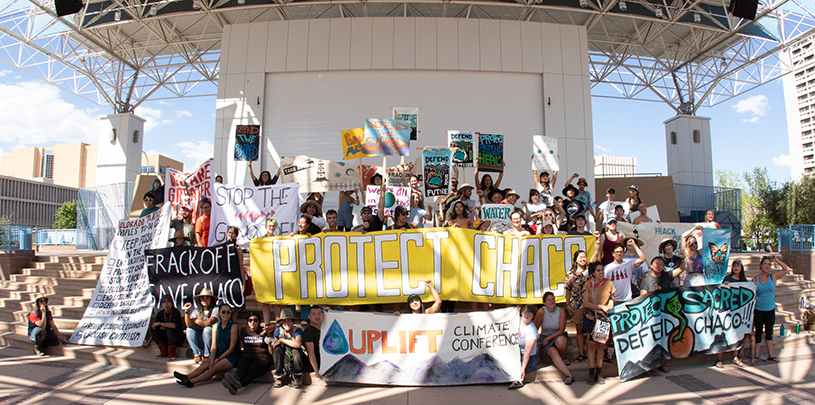
 by Eva Malis, Uplift Coordinator
by Eva Malis, Uplift Coordinator
I was born the same year as the inaugural United Nations Framework Convention on Climate Change’s Conference of the Parties (COP), an annual meeting of international policymakers attempting to deal with climate change. It has taken my entire life, 23 years, for international policymakers to come up with the Paris Agreement, which still doesn’t have mechanisms for enforcement. Considering the urgency of the climate crisis, this rate of progress does not feel meaningful enough.
Young people today are coming of age in an era of climate chaos. We’re still just coming to understand the world we were born into. We’re learning about the systemic ways that the fossil fuel industry maintains power and how an extractive economy harms communities. As a young person, I’m often at a loss about the most effective way to fight this impending and life-threatening crisis. Fortunately, Uplift has taught me that I’m not alone.

Uplifters attend the workshop "Self-care and Resilience in a Chaotic Climate" hosted by the Good Grief Network.
Uplift is a community of young people searching deeply for root causes of climate change and how to effectively put a stop to the continued destruction of our world. Uplift hosts an annual outdoor conference for young people ages 18 to 30 on the Colorado Plateau working toward a common goal: climate justice. Climate justice explores how climate change affects people and how ecological shifts impact society. Uplift 2018 took place in mid-September, bringing almost 150 young people to the Sandia Mountains in New Mexico to build on the existing regional movement for climate justice.
Through a series of panels, workshops, and activities, Uplift 2018 created a close-knit community that connected young people on the Colorado Plateau and empowered them to act for climate justice in the region. Workshop topics ranged from seed stewardship to Arizona’s energy history to direct-action planning. Uplift also drew attention to links between movements that aren’t commonly associated with climate change with the “Migrant Justice Amidst Climate Chaos” and “Food Justice in the Southwest” panels. These panels exposed Uplifters to a breadth of issues that are actually connected to and impacted by climate.

Panelists speak at Uplift 2018 on the "Beyond Extractive Economies" panel. JAKE HOYUNGOWA
In 2017, I had the opportunity to attend the 23rd UN Climate Change Conference as a youth delegate. There, I realized international climate policy can’t solve all of our problems. It is slow, hard to enforce, and won't save us in time. Instead of relying on international policy, we need to act at the local and regional levels to build grassroots mass movements for climate justice that will transform our local and regional economies to be regenerative, not extractive. The Uplift community is working to do just that.
At Uplift 2018, attendees demonstrated that young citizens are assuming leadership in acting for climate justice. Throughout the conference, Uplifters were encouraged to step into leadership positions and collaborate on strategy for the movement. Uplift ended on a note of action with a rally in downtown Albuquerque. The rally, planned by Uplifters over the course of the conference, called to ban fracking and resource extraction in order to protect the Greater Chaco region in northern New Mexico. Uplifters shared their connection to the issue and demonstrated that young people are the real climate-justice leaders. Amidst singing songs and sharing personal stories about resistance, the rally ended with attendees chanting the demands of the Colorado Plateau People’s To-Do List.

The Colorado Plateau People's To-Do List was Compiled by Uplifters at Uplift 2017. JAKE HOYUNGOWA
Did you know the Colorado River used to be called the Grand River? Learn about the name change and more fun facts about this hardworking river.
Read MoreChallenging conditions have endangered, threatened, or imperiled these five native fish in the Grand Canyon.
Read MoreBeneath the bathtub ring at Lake Powell, native plants are flourishing, cultural sites are resurfacing, and whitewater rapids are returning.
Read More